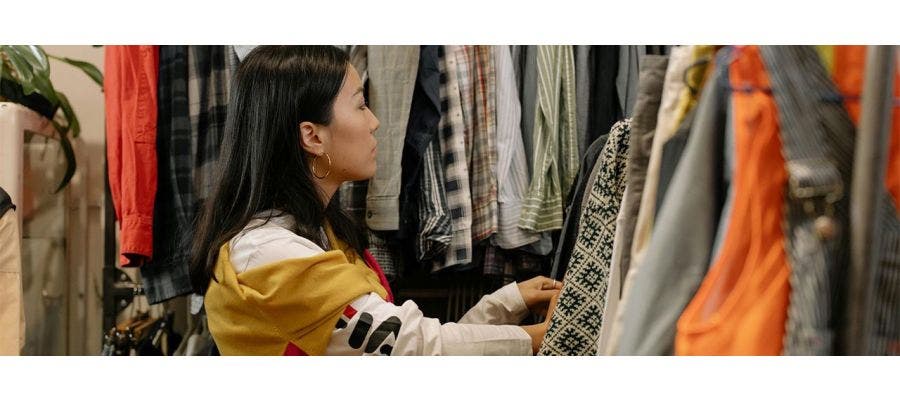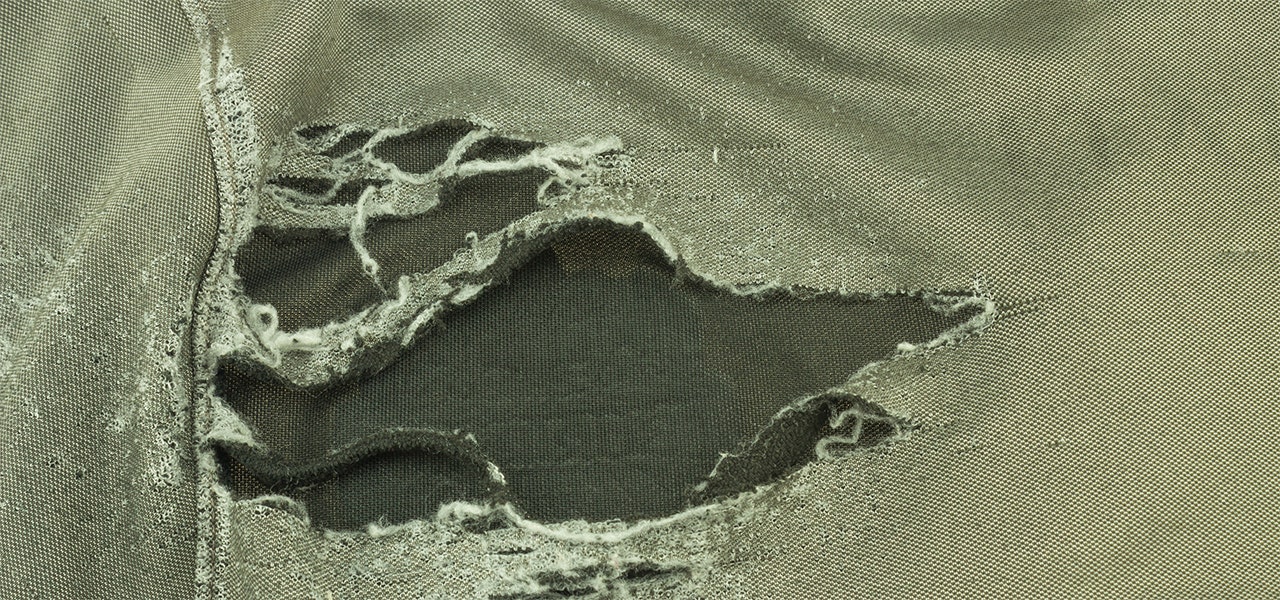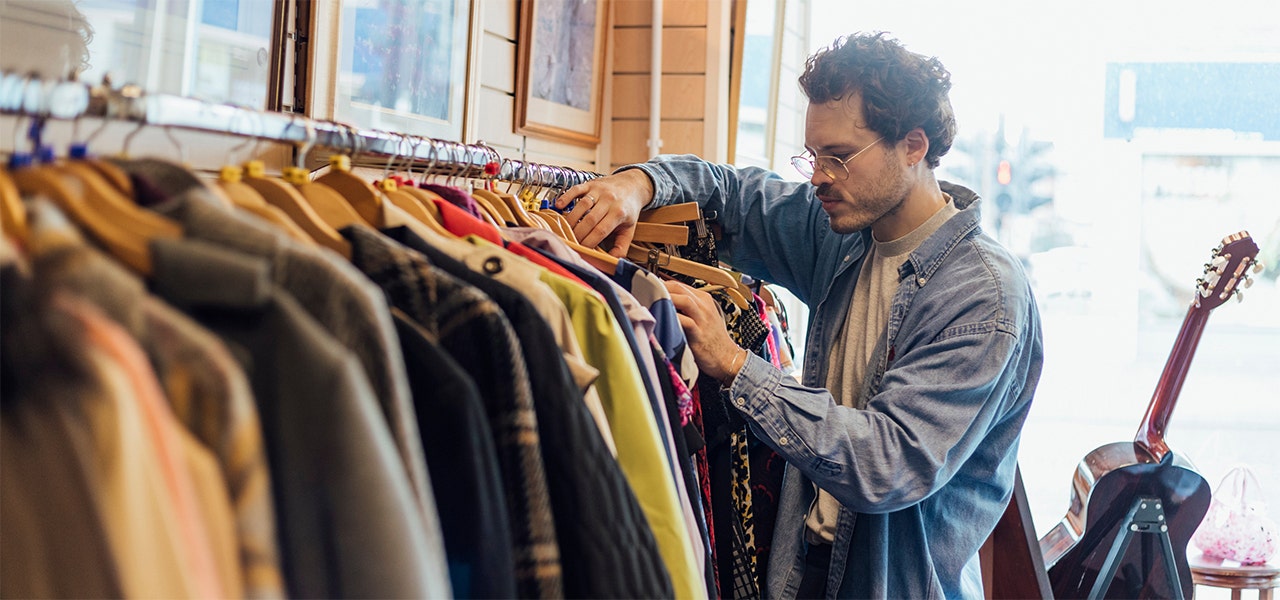
Thrifting and donating are such do-good-feel-good moves. You’re clearing out your closet, giving things a second life and maybe even scoring a vintage gem or two along the way. But here’s the thing – not all secondhand swaps are created equal.
If you’ve ever stood in front of a donation bin wondering, “Is this actually helpful … or just wishful recycling?” you’re not alone. Being a more conscious thrifter (and donor) doesn’t mean overthinking every item – it just means being a little more intentional.
Let’s break down what responsible thrifting and donating really look like and how to make sure your good intentions do actual good.
What does it mean to donate responsibly?
Dropping off a bag at your local thrift store is a great start – but let’s be real, it matters what’s in the bag and where it’s going.


Here’s how to donate in a way that actually helps:
- Only donate items in good condition. If it’s broken, stained, torn or missing pieces, it’s not a donation – it’s trash (and will likely become their trash to dispose of).
- Clean your items first. Giving your donations a quick wash or wipe-down makes them way more likely to be accepted and used.
- Be mindful of “donation dumping.” That big post-spring-cleaning drop-off might feel productive, but if it’s full of unusable stuff, it puts extra strain on nonprofit staff and resources.
- Research your donation site. Some organizations sell donated goods to fund job training, housing programs or sustainability efforts – others may not be quite as community-minded. Look for transparency about where your things (and their profits) go.
The bottom line: Responsible donating starts with being thoughtful about what you’re giving – and who you’re giving it to.
What not to donate (it’s okay, we’ve all been there)
Even with the best of intentions, some items just don’t belong in the donation pile. A few things most places can’t take:
- Stained, ripped or overly worn clothing
- Broken appliances or electronics
- Used mattresses, pillows or bedding (unless specifically accepted)
- Dirty or damaged furniture
- Items with mold, mildew, pet hair or strong odors


Why? These items are often unsafe, unsellable or just too costly to process. When unusable donations pile up, thrift stores end up spending money to dispose of them – money that could’ve supported their mission instead.
If you’re unsure, check the donation guidelines on your local store’s website or give them a quick call.
Wondering what to do with your bedding if you can't donate it? Check out our tips for how to responsibly dispose of your old mattress.
How to find thrift stores that are doing good
Not all thrift stores operate the same way, so if you want your purchases (and donations) to go the extra ethical mile, here’s what to look for:
- Nonprofits with transparent missions. There are plenty of big, nationwide thrift stores as well as small, local options that clearly state how their profits support the community.
- Shops that promote sustainability. Some secondhand stores specifically focus on reducing textile waste or funding environmental efforts. Just be sure to watch for any greenwashing.
- Local, independent thrift stores. Community-run shops often reinvest directly into local causes – and shopping small in your own community is always a win.
Avoid resellers that use donation-style drop-offs but don’t give back in any meaningful way. If it’s not clear where the money goes, it’s okay to ask. And if you don’t like the answer, there are always other options.
Tips for thrifting more responsibly
Whether you’re thrifting for fun, for your budget or to reduce your environmental impact, you can always afford to do it with a little extra intention. How? First, shop with a plan. It’s easy to get carried away in the discount bin and lose sight of your thrifting goal. Instead, make a list of what you need (and stick to it ... mostly).


Focus on quality. Look for durable, timeless pieces that can stand up to real use – not just trendy fast fashion knockoffs. Materials are everything, and natural fibers like cotton, linen and wool are key. And don't shy away from tailoring and mending. A little DIY or a quick trip to the tailor can give a great piece new life.
Go beyond clothes. Furniture, home goods, kids’ items, books – secondhand is often just as good (if not better) than buying new. Every pre-loved purchase keeps one more item out of the landfill and one less new product from using up more resources.
Why does responsible thrifting and donating matter?
At its core, thrifting creates a circular economy that's all about reducing waste, giving back and stepping away from the cycle of overconsumption. It’s not about being perfect – it’s about doing what you can, when you can, in ways that feel right for you.
And when we all make small, thoughtful choices like this, it adds up.
Just like choosing certified organic products for your sleep setup (hey there!), shopping secondhand and donating responsibly are easy ways to live a little lighter on the planet without sacrificing comfort or style.
Want to take your sustainability even further? Check out our guide to realistic Earth Day resolutions that actually stick.
